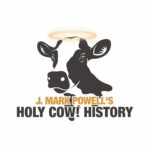HOLY COW! HISTORY: The tragedy you’ve never heard of
Transportation safety has made such incredible progress in recent years we now take it for granted. Yet there was a time (and not that long ago, either) when even the simplest trips carried risks for …
This item is available in full to subscribers.
Subscribe to continue reading. Already a subscriber? Sign in
Get 50% of all subscriptions for a limited time. Subscribe today.
Please log in to continueNeed an account?
|
HOLY COW! HISTORY: The tragedy you’ve never heard of
Transportation safety has made such incredible progress in recent years we now take it for granted. Yet there was a time (and not that long ago, either) when even the simplest trips carried risks for passengers. Exactly 110 years ago this summer, one such disaster rocked the country. Forgotten today, it’s worth revisiting now.
Nestled in the foothills of the Missouri Ozarks is the little crossroads community of Tipton Ford. It got its name because in the 19th century, folks crossed the lovely, meandering Shoal Creek there.
Wednesday, Aug. 5, 1914, was a typically hot summer day. Even a century ago, many people commuted to their jobs. Then as now, Joplin was the biggest town in far southwest Missouri, and folks traveled to and from it daily for work, business, to shop, or just visit friends and relatives. Which is where the Missouri and North Arkansas Railroad enters the story.
The railway offered service between Joplin and neighboring northwest Arkansas on what was called a Gas-Electric Motor Car. Think of a street car or a trolley, only bigger, the size of a full-passenger car. They were built by General Electric, could carry about 100 people, and were nicknamed Doodlebugs. Some said it was because the combo passenger-freight car resembled an insect; others thought it was because of the way it slowly doodled down the tracks.
Doodlebugs served passengers along the 60-mile stretch from Joplin to Arkansas on tracks shared with the Kansas City Southern (KCS) Railroad, which was how the trouble started.
A Doodlebug filled with passengers left Joplin as scheduled early that Wednesday evening. Among its estimated 80 passengers were members of nearby Neosho, Mo.’s African-American community, who were returning home after attending Emancipation Day ceremonies in Joplin. The Doodlebug departed and headed south—directly into the path of a KCS passenger train heading north.
(Some historical sources refer to the KCS train as a freight train. But the Missouri Public Service Commission’s official report makes it clear it was actually a passenger train.)
The two collided head-on near Tipton Ford. The passenger train ripped open the Doodlebug’s gasoline tank, spewing fuel and igniting a massive fireball. The blast was so strong, it blew some passengers out the windows and onto the ground. They were the lucky ones; dozens of others were trapped under blazing wreckage. Injured people actually begged to be shot and killed as they slowly burned to death.
Someone ran to the nearest house with a telephone. Soon, an emergency train filled with doctors, nurses, and medical supplies was racing south from Joplin. When it arrived, the scene must have looked like Hell on Earth.
The flames were eventually put out. The best estimate put the death toll at 43; 38 passengers and five crew. But the bodies were so badly burned that the exact count may never be known. It ranks among the top 25 deadliest train crashes in American history. With the track clear to the south, survivors and victims alike were rushed to Neosho.
A few days later, some 5,000 people flooded Neosho’s town square for an open-air memorial service.
So, how did the deadly mistake that placed two trains on the same track happen? Even 110 years later, nobody knows for sure. Missouri officials investigated and found an order had been issued for the Doodlebug to pull onto a sideline and let the passenger train pass. But the crew never received it. It’s unclear how the mix-up happened, but it’s worth noting that the depot clerk who said he delivered the order had previously been fired from an earlier railroad job for failing to deliver a similar order.
Many of the victims were buried in Neosho’s I.O.O.F. Cemetery, and a marker was eventually erected in their memory. For decades, people passed by without stopping to read its sad inscription.
As noted earlier, the accident was national news. The New York Times and many other leading newspapers covered it. But almost as soon as it happened, the story was swept off the front page by an even bigger story. A lot was happening in the summer of 1914 – such as the start of World War I. Over the decades, the Tipton Ford tragedy was quietly lost in the mists of time.
Today, more and more people are becoming aware of the accident. A decade ago, Anthony Benton Gude, grandson of famous Missouri artist Thomas Hart Benton, painted a mural commemorating the tragedy. Several memorial services marked the crash’s centennial, and a stone marker was erected at the site of the disaster so that people of the 21st century can be reminded just how fragile life is and how suddenly and unexpectedly it can be taken away.
Have comments, questions or suggestions you’d like to share with Mark? Message him at jmp.press@gmail.com.
Other items that may interest you







Comments
No comments on this item Please log in to comment by clicking here